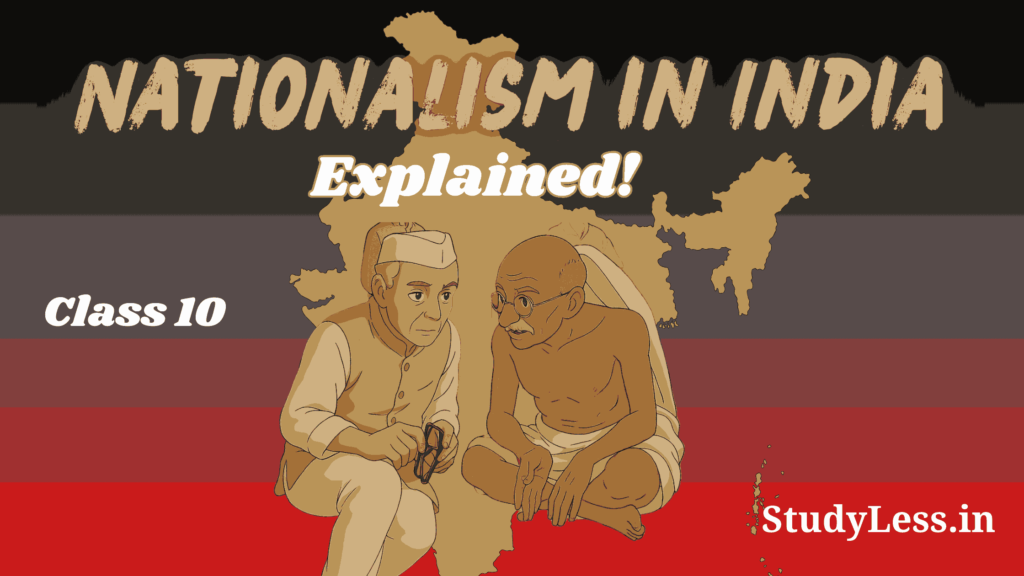Struggling to make sense of caste in politics, gender biases, and communalism in your CBSE Class 10 Civics chapter? You’re not alone! Every year, students like you get stuck trying to decode terms like ‘caste based vote banks’, ‘secularism’, and ‘feminist movements’—only to end up with messy notes and zero clarity. But what if you could master these topics in 30 minutes?
This Explanation is your ultimate cheat sheet: packed with simple definitions, real-life examples, and NCERT-aligned notes that turn confusing textbook jargon into bite-sized insights. No more late-night Googling “communalism class 10 notes” or “how caste affects elections”—we’ve got you covered. Whether you’re cramming for exams or just want to finally understand how social divisions shape democracy, this guide breaks it all down with clarity, diagrams, and FAQs you won’t find anywhere else.
Dive in and turn your confusion into confidence!
Table of Contents
Gender and politics
Gender is socially determined whereas sex is biologically determined.
Society has preset some work and roles that a particular type of gender should do. For example, household work is done by the female and work outside home is preferably done by the male.
Politics is like choosing a game at school. Some want cricket, some want kho-kho, and everyone tries to convince others. Groups form, debates happen, and in the end, a decision is made.
That whole process of talking, convincing, forming teams, and making a final decision? That’s basically politics! 😃
But for grown-ups politics is talking about big things like schools, roads, laws, gender equality, caste equality, religious harmony, etc.
Now lets try to understand Gender, Religion and Caste and their interplay in politics within the scope of your class 10 political science chapter no. 3 – “ Gender, Religion and Caste “
What is Gender Division?
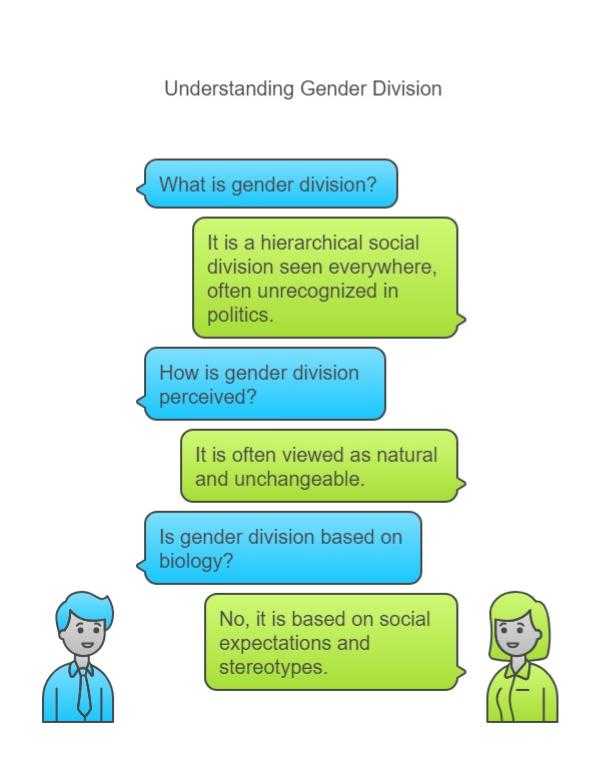
Gender division means society often treats men and women differently and unequally.
- It’s a hierarchy: One gender (usually men) is seen as “above” the other.
- Example: Men are expected to lead, while women are told to focus on caregiving.
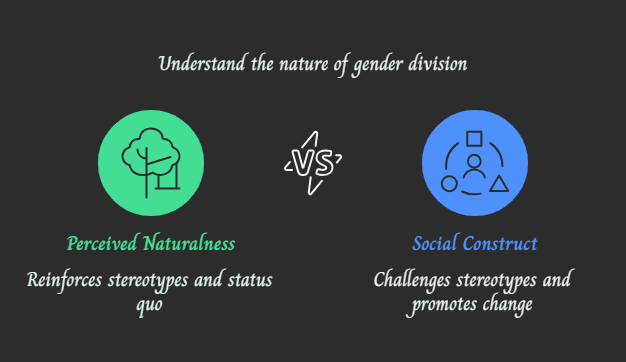
Myth: “It’s Natural!”
People often think gender roles are “just the way things are” because of biology. This is false!
- Truth: Gender roles are created by societal rules and stereotypes, not biology.
- Example: Saying “women are emotional” or “men don’t cry” are learned ideas, not facts.
Why Politics Ignores Gender Division
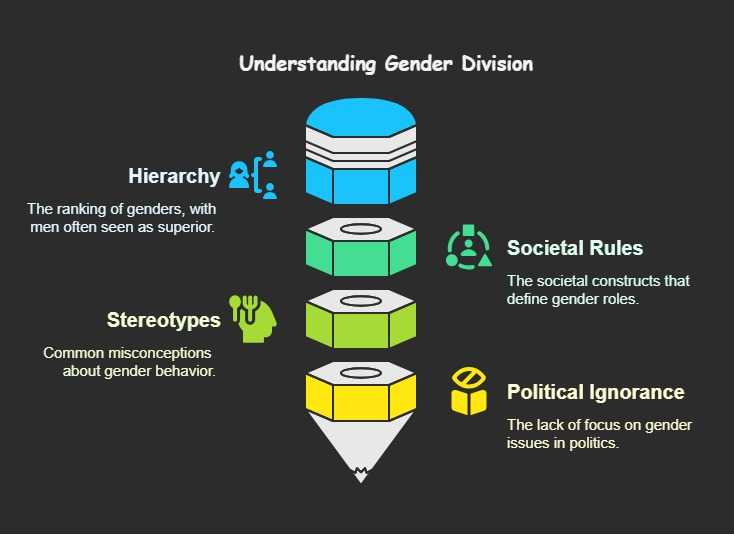
Gender inequality is rarely studied in politics because:
- It’s seen as “normal” or “too private” to discuss.
- Leaders often focus on “bigger issues” like the economy, ignoring how gender affects power.
Time to Reflect!
- Question: If gender roles aren’t natural, why do we still follow them?
- Imagine: A world where jobs, leadership roles, and household duties aren’t tied to gender. What changes?
Remember: Gender roles are made by people—so people can change them! 🌟
Public/private division
Understanding Gender Roles in Society
Let’s break this down step by step.
How Society Teaches Gender Roles?
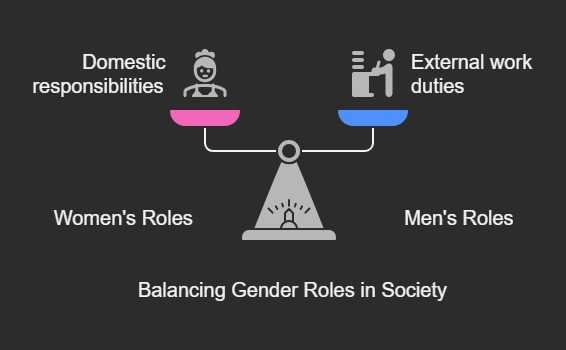
Boys and girls are often taught that women must handle housework and raise children. This idea creates a “division of work” in families:
- Women do tasks inside the home: cooking, cleaning, laundry, childcare, etc.
- Men do work outside the home.
This isn’t because men can’t do housework. They’re taught to believe it’s a woman’s job.
But Wait! Men Do Housework Too… Sometimes
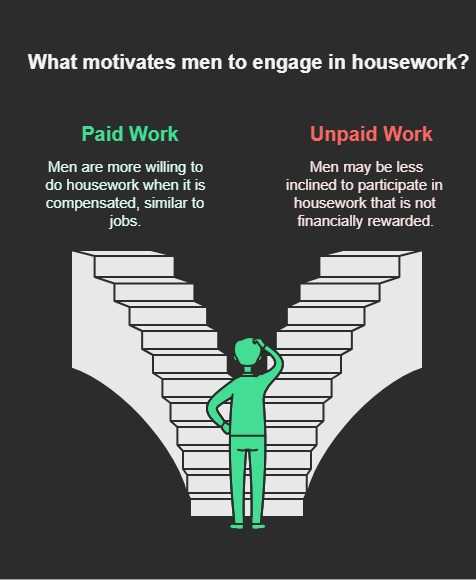
When housework is paid (like in jobs), men are happy to do it! For example:
- Most cooks in hotels are men.
- Many tailors are men.
This shows the division isn’t about ability—it’s about society’s unfair expectations.
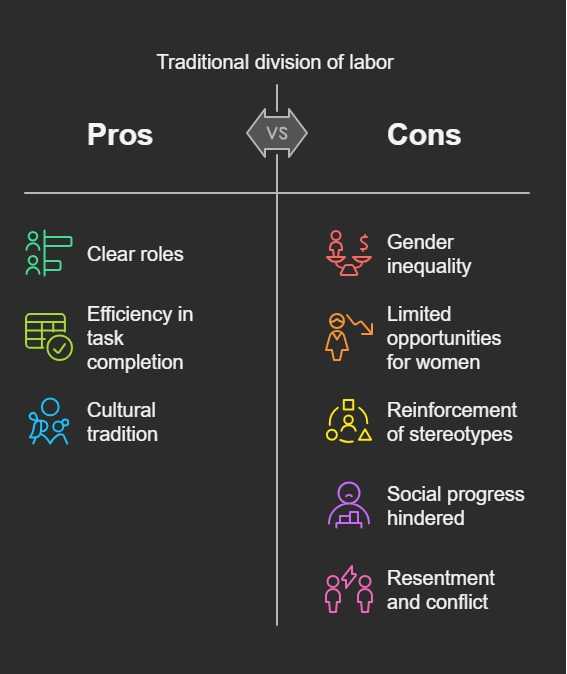
Women Also Work Outside the Home!
- In villages, women fetch water, collect firewood, and farm.
- In cities, poor women work as maids, while middle-class women work in offices.
- Most women do paid work and unpaid housework.
But their work is often ignored or undervalued.

Why Does This Division Harm Society?
Because of this unfair system:
- Women make up half the world but have little power in public life, especially politics.
- Historically, only men could vote, lead, or join public activities.
How Women Fought for Equality
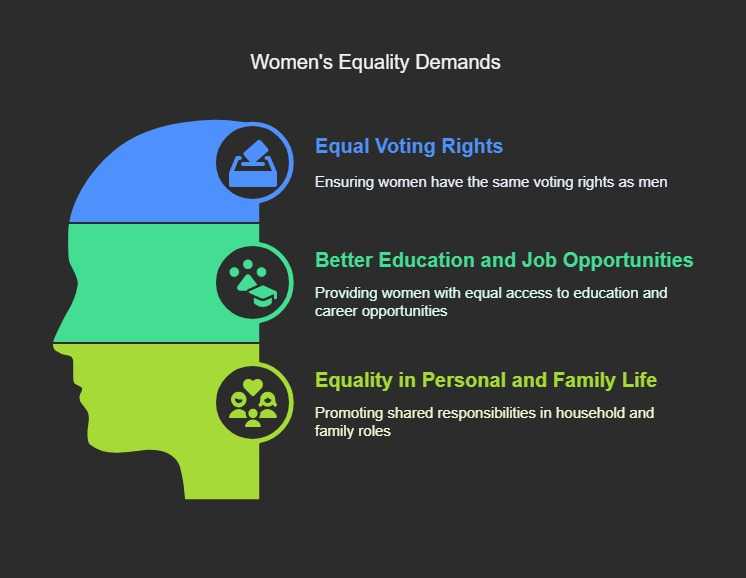
Women globally organized movements to demand:
- Equal voting rights.
- Better education and job opportunities.
- Equality in personal and family life (e.g., sharing housework).
These are called feminist movements.
Progress So Far
Thanks to these movements:
- Women now work as doctors, engineers, lawyers, and leaders—jobs once seen as “only for men.”
- In countries like Sweden and Norway, women participate much more in public life.
But India Still Has a Long Way to Go
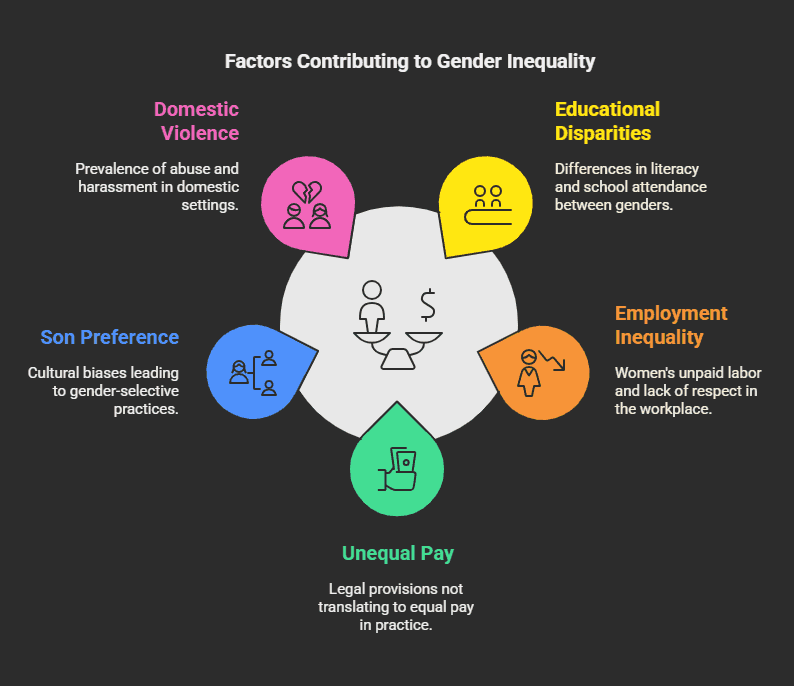
Despite progress since Independence, India remains male-dominated:
1. Education Gap
- 76% of men are literate vs. 54% of women.
- Girls often drop out of school because families spend more on sons’ education.
2. Few Women in High-Paying Jobs
- Women work 1+ hour more daily than men (including unpaid housework).
- Their work is rarely respected.
3. Unequal Pay
- By law (Equal Remuneration Act, 1976), men and women should get equal pay for equal work.
- But women earn less in every field—films, sports, factories, etc.
4. Preference for Sons
- Families often abort girl children, leading to a low child sex ratio (919 girls per 1,000 boys).
- Girls face neglect in health, education, and food.
5. Violence at Home
Many women face abuse, harassment, and domestic violence.
Time to Reflect!
- Question: What does society say an “ideal woman” should be? Do you agree?
- Your Turn: Imagine your version of an ideal woman. Is she free to choose her life?
Feminist = Someone (man or woman) who believes in equal rights for all.
Let’s keep questioning unfair norms and build a world where everyone’s work is valued! 🌟
Women’s political representation
Understanding Women’s Political Representation
Let’s simplify this topic step by step.
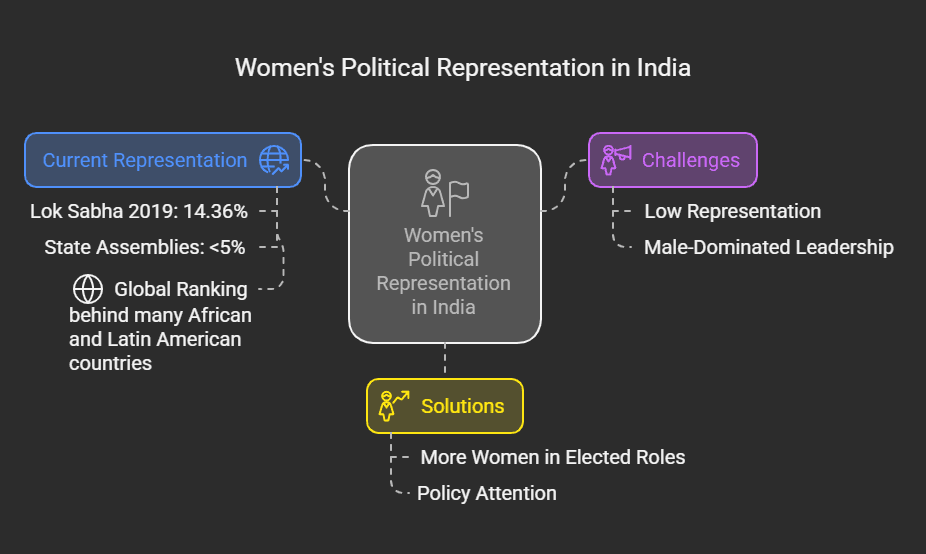
Why Women Need Political Power
Women’s issues (like health, safety, and rights) are often ignored. Why?
- Feminists argue: Until women control power, their problems won’t get attention.
- Solution: More women in elected roles!
India’s Struggle with Women in Politics
In India, women’s representation in government is very low:
- Lok Sabha (2019): Only 14.36% of seats are held by women.
- State Assemblies: Less than 5% are women.
- Global Ranking: India is behind many African and Latin American countries.
Even when a woman becomes a Chief Minister or Prime Minister, most ministers are men.
How Can We Fix This?
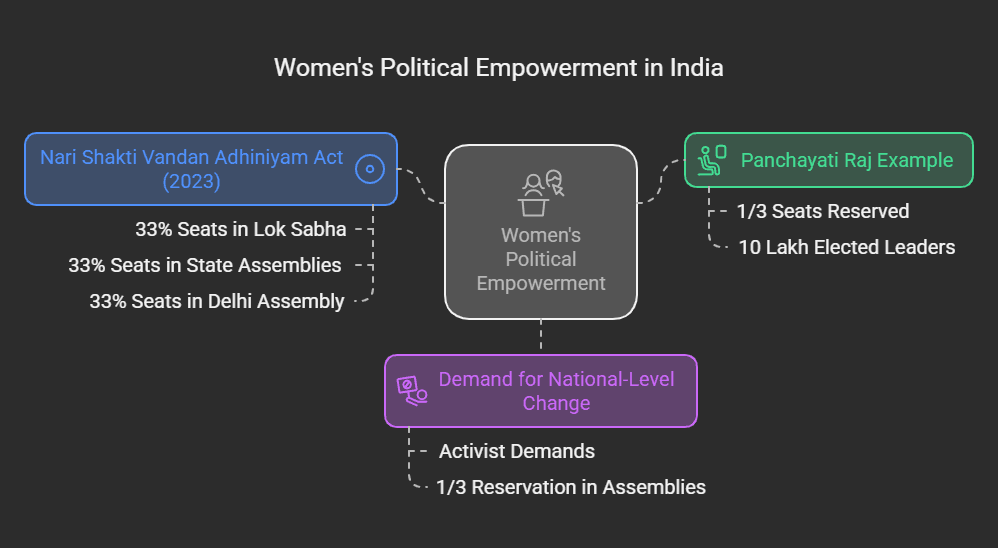
Legal Reservations:
- Panchayati Raj Example: 1/3 of seats in local governments (villages/cities) are reserved for women.
- Result: Over 10 lakh (1 million) elected women leaders in rural/urban areas!
Demand for National-Level Change:
- Activists demanded 1/3 reservation in Lok Sabha and State Assemblies.
- After decades of debate, the Nari Shakti Vandan adhiniyam Act (women’s reservation act )(2023) passed:
- 33% seats reserved for women in Lok Sabha, State Assemblies, and Delhi Assembly.
Why Politics Can’t Ignore Social Issues
- Gender inequality is a social division that must be addressed politically.
- Example: Women’s progress (like laws for equality) happened because their struggles became political issues.
Think: Could women have achieved these gains if their unfair treatment stayed outside politics?
Time to Reflect!
- Question: Should social divisions (like gender) be part of political debates? Why or why not?
- Your Turn: Imagine a world where women hold half the political power. How would policies change?
Equality in politics = Stronger democracy! 🌟
Religion, communalism and politics
Understanding Religious Differences in Society
Let’s break this down step by step.
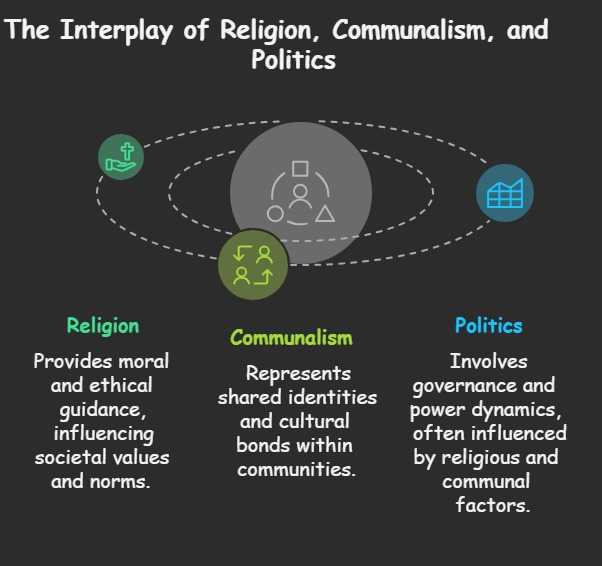
Religion: A Different Kind of Social Division
Religious differences are not as universal as gender divisions. But religious diversity is common worldwide. For example:
- Countries like India have people of many religions.
- Even in places where most follow the same religion (like Northern Ireland), there can be conflicts over how to practice it.
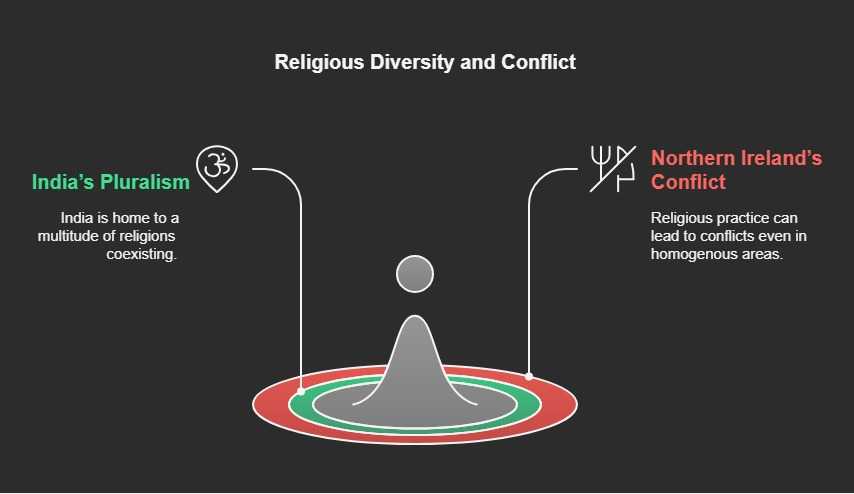
How Religion Connects to Politics
Religion often plays a role in politics. Let’s see how:
1. Gandhi’s View on Religion & Politics
Gandhiji said, “Religion can’t be separated from politics.”
- He didn’t mean favoring one religion (like Hinduism/Islam).
- He meant politics should follow moral values (like justice, equality) taught by all religions.
2. Protecting Minorities
- Human rights groups demand governments stop communal riots and protect religious minorities.
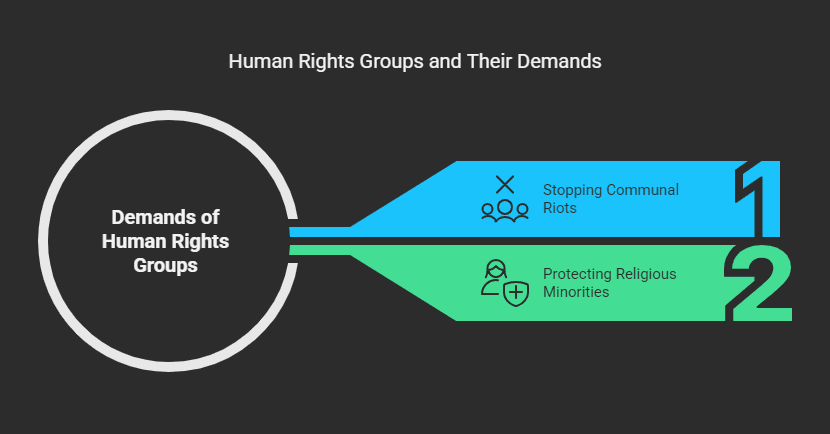
3. Fighting Unfair Family Laws
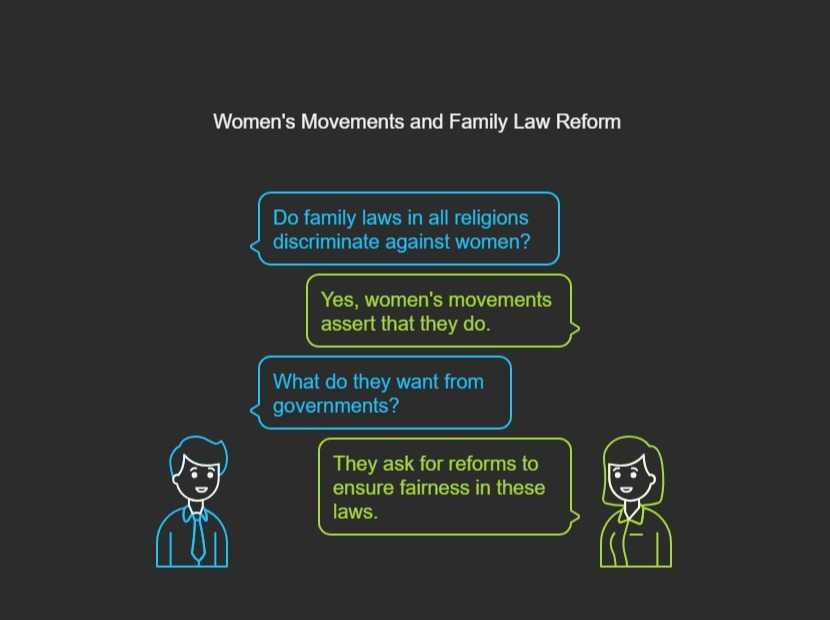
- Women’s movements say family laws in all religions discriminate against women.
- They ask governments to reform these laws for fairness.
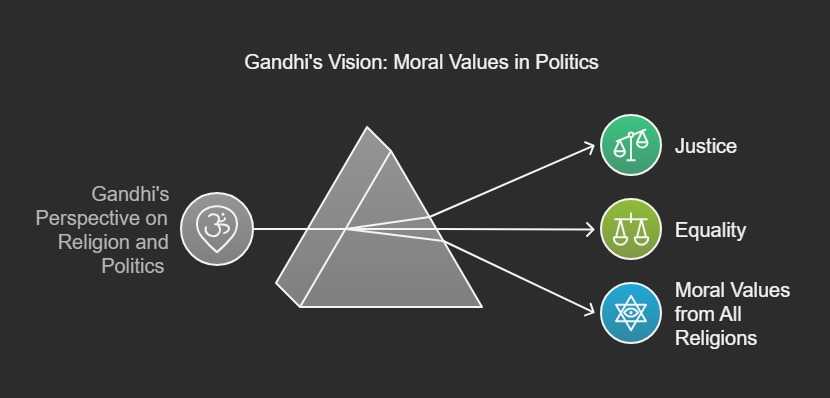
Is Mixing Religion & Politics Wrong?
Not always! Here’s why:
- Good Side: Ideas from religions (like equality, kindness) can guide politics positively.
- People’s Rights: People should freely express their religious needs in politics.
- Regulating Harm: Governments must sometimes step in to stop religious practices that cause discrimination (e.g., casteism, gender bias).
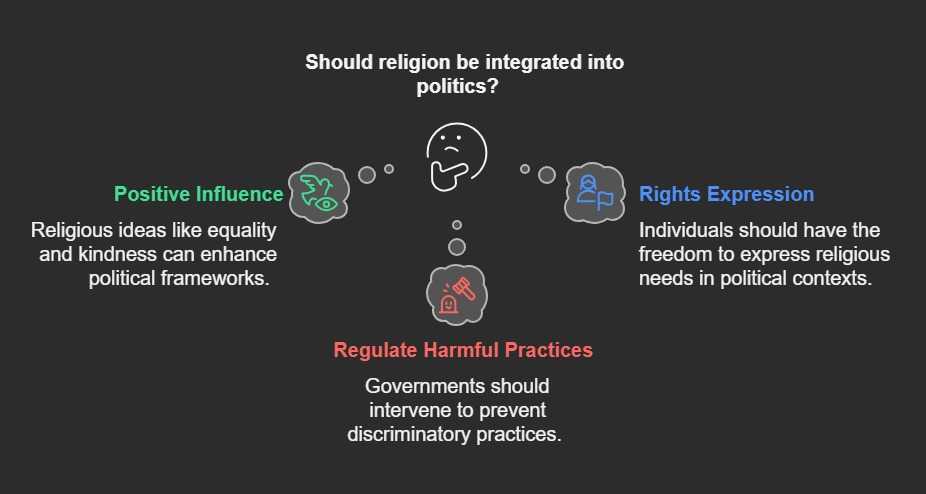
Key Rule: Treat all religions equally. No favoritism!
But Wait… “I’m Not Religious. Why Should I Care?”
Even if you’re not religious:
- Communalism (using religion for division) affects society’s peace.
- Secularism (equal respect for all religions) ensures no community feels unsafe or unheard

Time to Reflect!
- Question: Should governments use religious values to make laws? What if those values clash with modern rights (like gender equality)?
- Your Turn: Imagine a law based on religious morals. How would you ensure it’s fair to everyone?
Respecting differences + Equal treatment = Stronger society! 🌟

Understanding Communalism
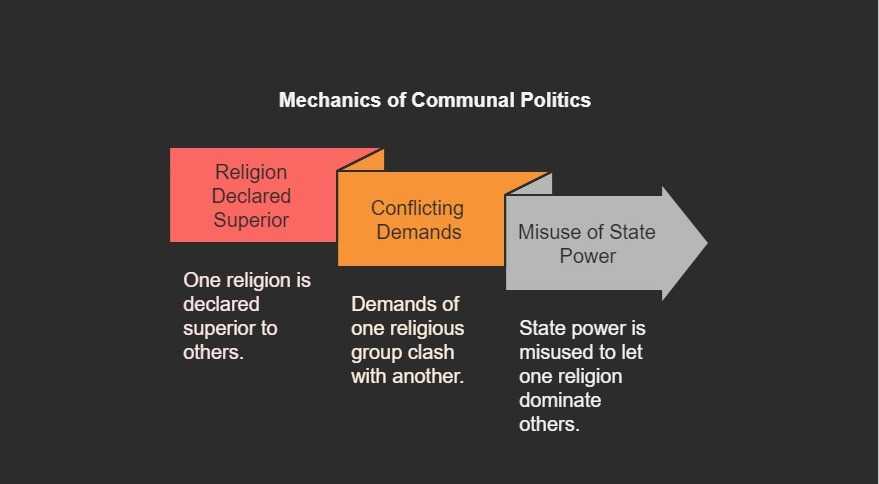
Let’s break down this complex idea step by step.
What is Communalism?
Communalism starts when religion is treated as the foundation of a nation.
- Example: Northern Ireland (Chapter 3) shows how dangerous this can become.
- Problem: Religion is used in politics to divide people, favoring one group over others.
How Does Communal Politics Work?
Communal politics happens when:
- One religion is declared “superior” to others.
- Demands of one religious group clash with another.
- State power is misused to let one religion dominate others.
This creates “us vs. them” conflicts instead of unity.
The Flawed Logic of Communalism
Communal thinking assumes:
- Followers of the same religion must form one community with identical interests.
- Differences within the community (like caste, gender, or opinions) are ignored.
- People of different religions cannot coexist peacefully in one nation.
Extreme communalism claims:
- Either one religion must control others, or they should form separate nations.
Why Communalism is Wrong
- People are not defined only by religion:
- A person has many roles: parent, worker, student, etc.
- Interests vary even within the same religious group.
- Suppresses diverse voices:
- Forcing all followers of a religion into one group silences differences (e.g., women’s rights, caste issues).
- Coexistence is possible:
- History shows people of different faiths can live together as equals (e.g., India’s freedom movement).
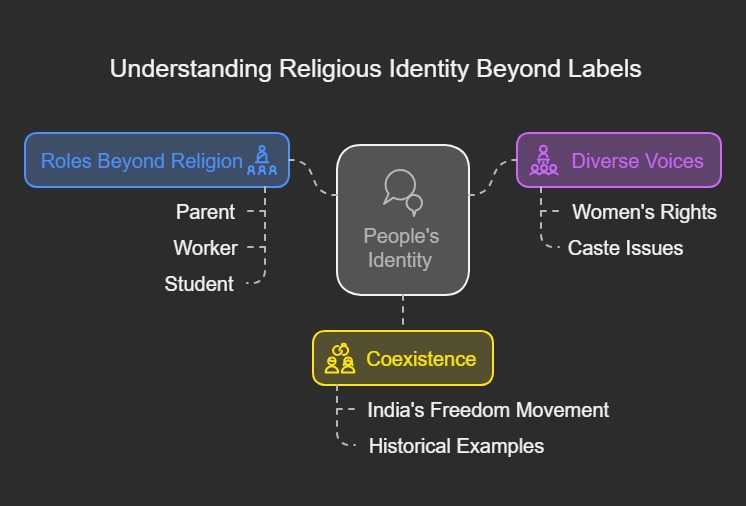
Time to Reflect!
- Question: Can a nation truly prosper if it prioritizes one religion over others?
- Imagine: A world where your religion decides everything—your friends, job, or rights. Would that feel fair?

Remember: Unity thrives when we celebrate diversity, not division
Understanding Communalism in Politics
Let’s simplify the different ways communalism shows up in society and politics.
Everyday Beliefs and Prejudices
Communalism often starts with small, everyday ideas:
- Religious stereotypes: Assuming all members of a religion behave the same (e.g., “They are violent” or “We are peaceful”).
- Sense of superiority: Believing your religion is “better” than others.
- Ignoring differences: For example, India’s family laws (marriage, inheritance) differ by religion, reinforcing divisions.
These ideas are so common that we often don’t even notice them!
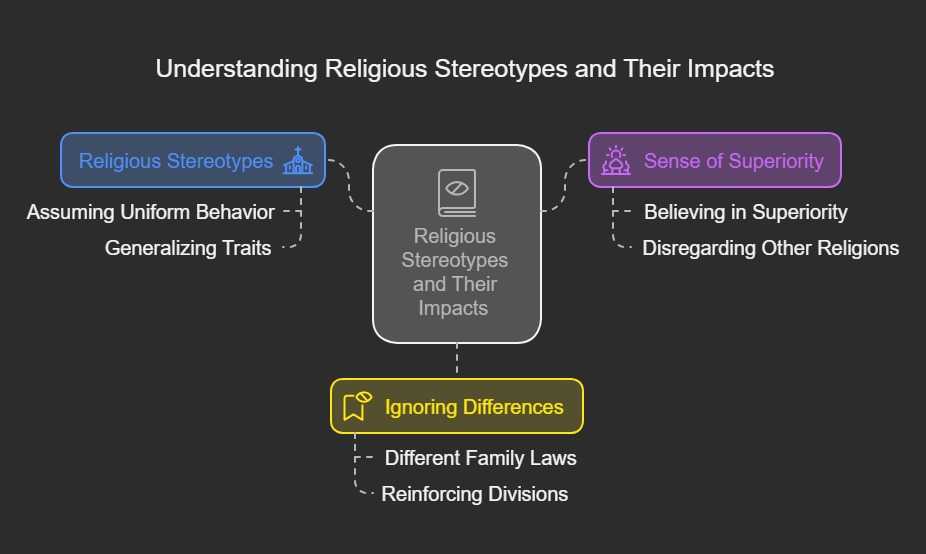
The Quest for Political Power
Communalism fuels a desire to dominate:
- Majority groups: May try to control politics, laws, and resources (e.g., “This is a Hindu/Muslim/Christian nation”).
- Minority groups: Might demand a separate state or special rights to protect their identity.
This creates tension between “us” (our religion) and “them” (others).
Political Mobilization Using Religion
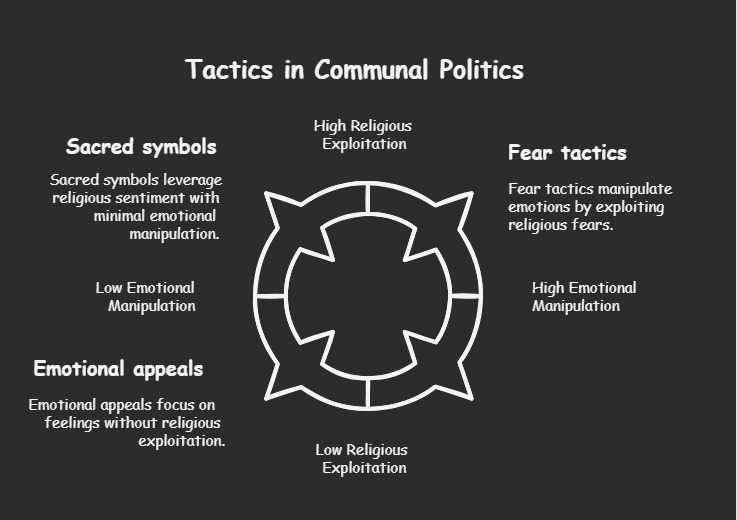
Politicians often use religion to win votes:
- Sacred symbols: Flags, slogans, or religious figures to rally support.
- Fear tactics: “Vote for us, or they will harm your faith!”
- Emotional appeals: Promising benefits for one religious group over others.
This divides people instead of uniting them around shared needs (like jobs or education).
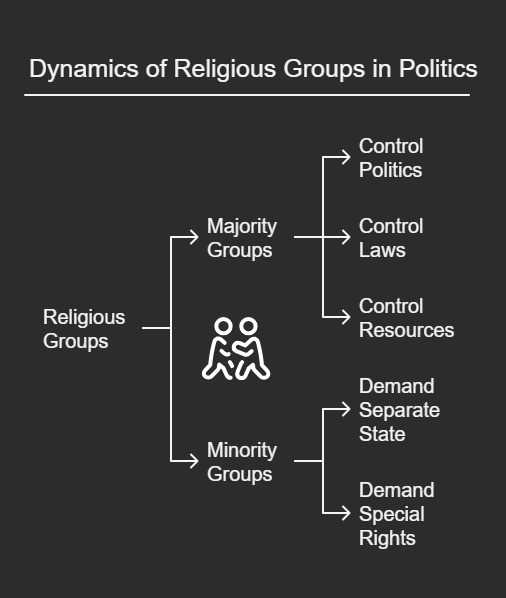
Communal Violence: The Worst Form
At its worst, communalism leads to:
- Riots: Violent clashes between religious groups (e.g., Partition of India-Pakistan in 1947).
- Massacres: Targeted killings of communities (e.g., Delhi riots, Gujarat riots).
- Fear and distrust: Makes it hard for different religions to live together peacefully.
Why Does This Matter?
- Destroys unity: Divides people who could otherwise work together for progress.
- Distracts from real issues: Focus shifts from poverty, education, or healthcare to religious fights.
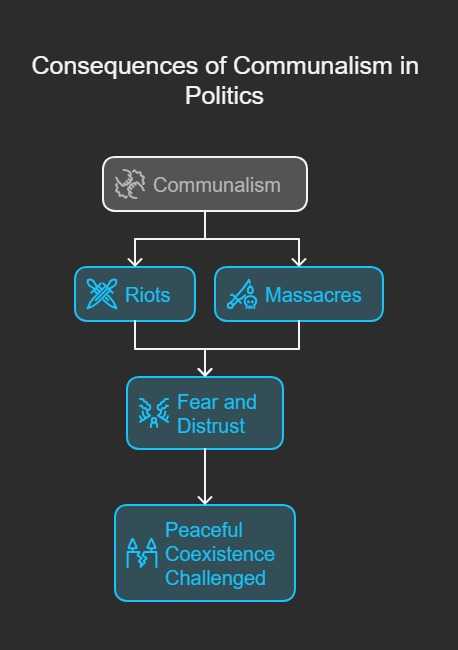
Time to Reflect!
- Question: Have you ever heard someone say, “All [X religion] people are…”? Why is this harmful?
- Imagine: A politician promises to build schools but instead starts a religious debate. How does this affect society?
Remember: A strong nation respects all faiths and focuses on shared goals! 🌟
Understanding India’s Secular State
Let’s break down why India chose secularism and how it fights communalism.
Why India Chose a Secular Model
Communalism has always been a major threat to democracy. Our Constitution makers knew this, so they designed India as a secular state. Here’s what that means:
Key Features of India’s Secularism
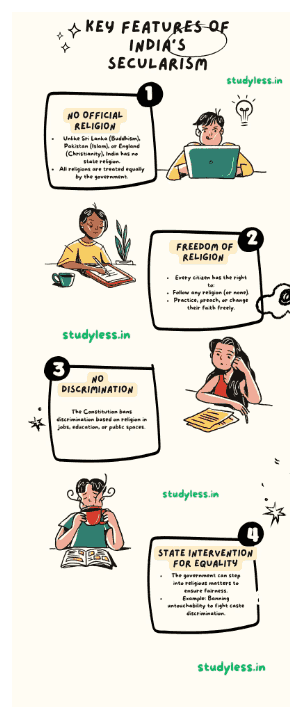
1. No Official Religion
- Unlike Sri Lanka (Buddhism), Pakistan (Islam), or England (Christianity), India has no state religion.
- All religions are treated equally by the government.
2. Freedom of Religion
- Every citizen has the right to:
- Follow any religion (or none).
- Practice, preach, or change their faith freely.
3. No Discrimination
- The Constitution bans discrimination based on religion in jobs, education, or public spaces.
4. State Intervention for Equality
- The government can step into religious matters to ensure fairness.
- Example: Banning untouchability to fight caste discrimination.
Why Secularism is Essential
- Not just a political idea: Secularism is a core value of India, like democracy or justice.
- Threat of communalism: It doesn’t just harm minorities—it attacks the unity of India itself.
A Secular Constitution Isn’t Enough!
While India’s laws are secular, communalism persists. To truly fight it:
- Challenge Prejudices: Reject stereotypes and hate speech in daily life.
- Reject Religion-Based Politics: Oppose parties that divide people by faith for votes.
- Promote Equality: Ensure laws like the ban on untouchability are enforced.
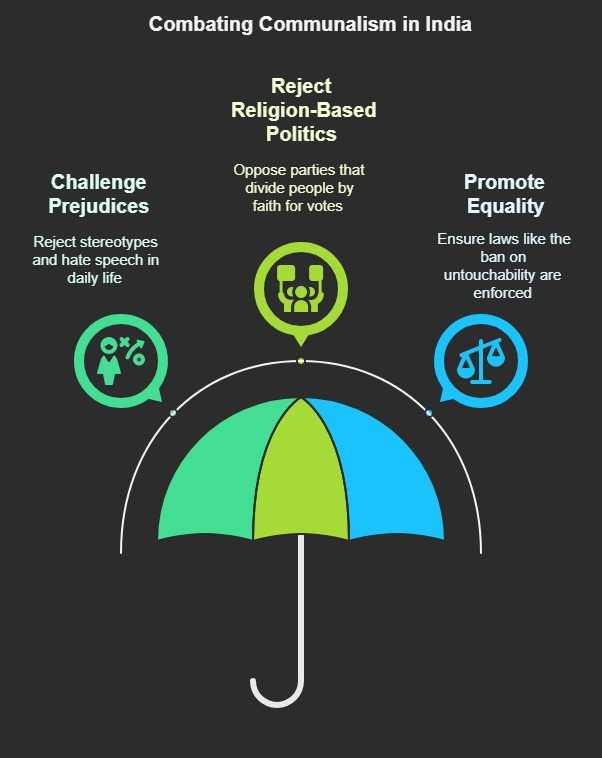
Time to Reflect!
- Question: Imagine if India had an official religion. How would life change for minorities?
- Your Turn: How can you help counter communal ideas in your school/community?
Remember: Secularism isn’t “anti-religion”—it’s about equal respect for all. Let’s protect this idea to keep India united! 🌟
Understanding Caste and Politics in India
Let’s break this down into simple parts.
Caste: A Unique Social Division
Unlike gender or religion, caste divisions are special to India. While all societies have inequality, caste is extreme because:
- Jobs were passed down generations and tied to rituals.
- People married, ate, and socialized only within their caste.
The Dark Side of Caste
The caste system was built on discrimination:
- “Outcaste” groups (Dalits) faced untouchability—they were barred from temples, schools, and public spaces.
- Leaders like Jyotiba Phule, Gandhi, Ambedkar, and Periyar fought to end caste inequalities.
How Caste Has Changed Over Time
Modern India has seen shifts due to:
- Economic growth, urbanization, and education.
- Laws: The Constitution banned caste discrimination and introduced policies (like reservations) to uplift oppressed groups.
- Mobility: In cities, people interact freely across castes in public spaces (e.g., streets, restaurants).
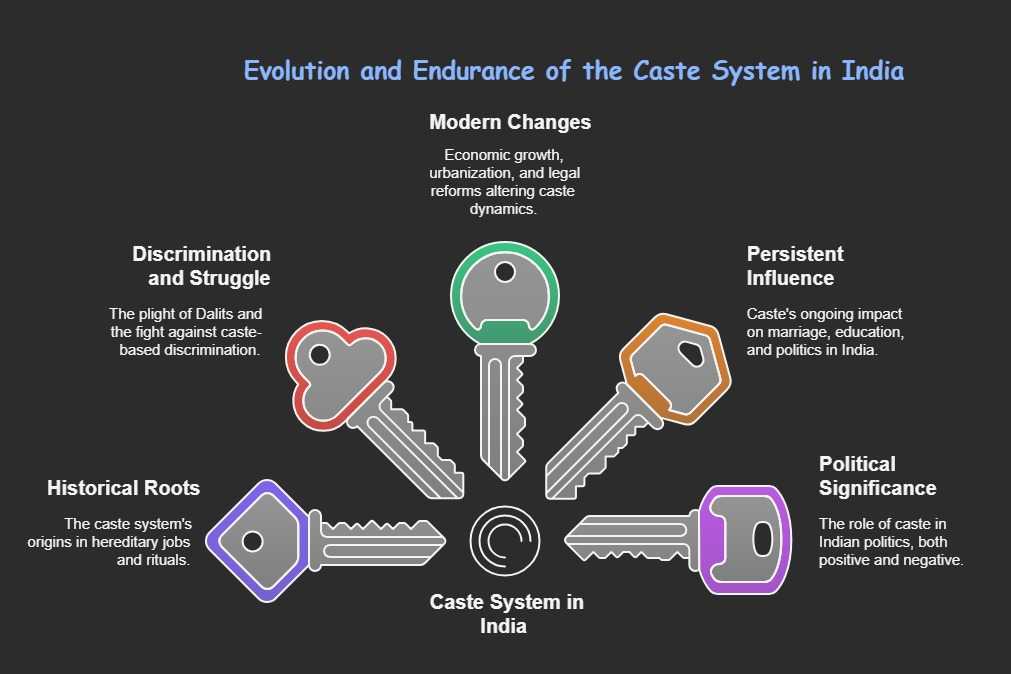
But Caste Isn’t Gone Yet!
Caste still affects life in India:
- Marriage: Most marry within their caste.
- Untouchability: Still exists in rural areas despite being illegal.
- Education & Jobs: Upper castes dominate urban middle classes (they had early access to education).
- Money Matters: Caste often decides economic status (wealthy vs. poor).
Why Does Caste Still Matter in Politics?
- Positive: Reservations give marginalized groups a voice in government.
- Negative: Politicians sometimes use caste to win votes, creating divisions.
Time to Reflect!
- Question: If caste isn’t as visible in cities, why do you think it still shapes opportunities?
- Imagine: You’re a leader. How would you ensure caste doesn’t limit anyone’s future?
Remember: Ending caste bias needs both laws and changes in our daily attitudes! 🌟
Understanding Caste in Indian Politics
Let’s break down how caste influences elections and why it’s not the only factor that matters.
The Myth of “Caste as Identity”
Belief: Some think caste alone defines a person’s community and interests.
Reality:
- Caste is one part of identity, not the whole story.
- People of the same caste can have different jobs, incomes, and opinions.
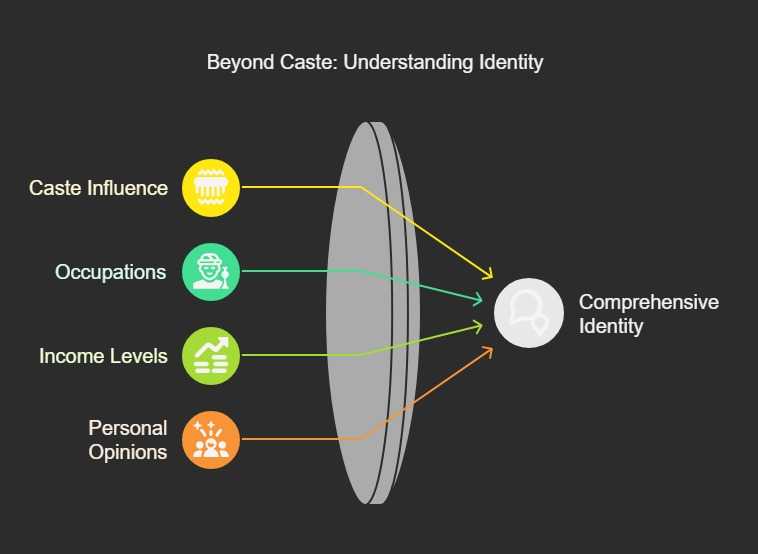
How Caste Shows Up in Politics
A. Picking Candidates by Caste
- Parties choose candidates based on the caste mix of voters in an area.
- Example: If a region has many Yadav voters, parties might field a Yadav candidate.
B. Using Caste Emotions
- Politicians appeal to caste pride: “Vote for us—we represent YOUR caste!”
- Some parties are seen as “champions” of specific castes.
C. Voting Rights Changed the Game
- Universal Adult Franchise (every adult can vote) forced leaders to connect with all castes.
- Marginalized castes (once ignored) gained a voice and confidence.

Myth Busted: Elections Aren’t Only About Caste!
A. No Single Caste Rules
- Fact: No parliamentary seat has a majority of one caste.
- Parties need support from multiple castes to win.
B. Caste ≠ Unanimous Votes
- Even if a caste is a party’s “vote bank,” not all members vote the same way.
- Example: Only 60% of a caste might support “their” party.
C. Too Many Choices
- In some areas, multiple candidates from the same caste compete.
- Result: Voters split votes, or some have no caste-matched candidate.
D. Voters Change Minds
- Ruling parties often lose—proves caste loyalty isn’t fixed.
- Example: A BJP MP might lose next term even if their caste dominates the area.
What Really Influences Votes?
- Party Loyalty: Many voters stick to a party (like Congress or BJP) regardless of caste.
- Money Matters: Rich and poor of the same caste often vote differently.
- Performance: Voters care about roads, schools, and jobs—not just caste.
- Leader Popularity: A charismatic leader can sway votes beyond caste lines.
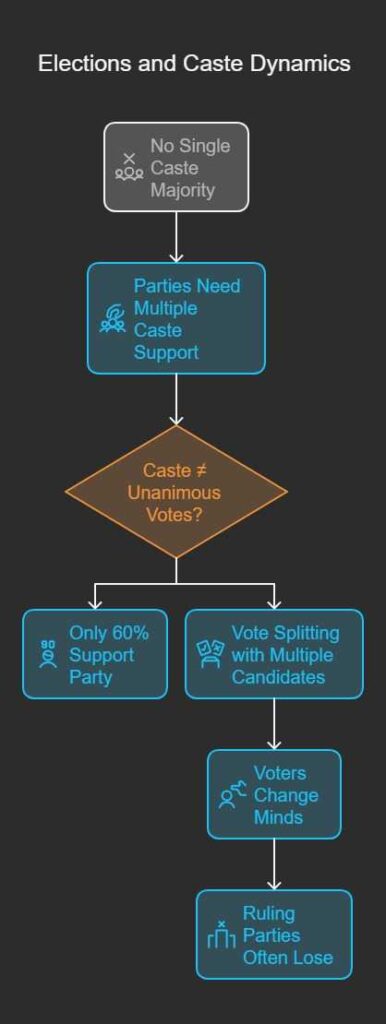
Time to Reflect!
- Question: If your caste had a “favorite” party, would you always vote for them? Why or why not?
- Imagine: A politician delivers good schools but ignores caste appeals. Would you support them?
Remember: Caste is a factor, but democracy is richer when we vote for progress, not just identity! 🌟
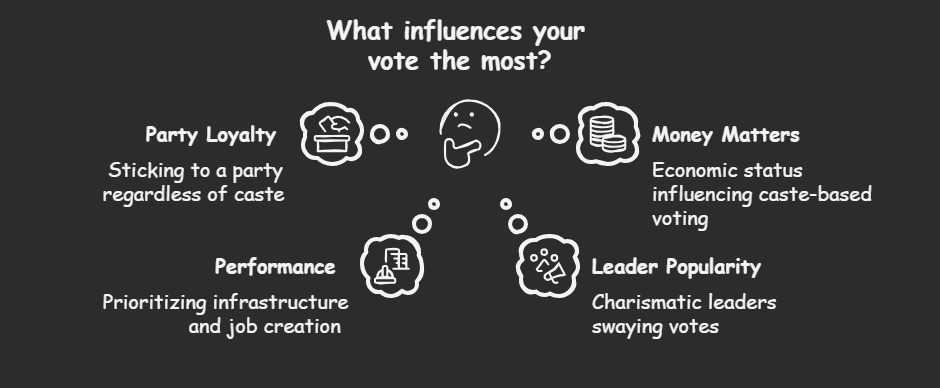
Understanding How Politics Shapes Caste
Let’s explore how politics doesn’t just use caste—it changes caste too!
Caste Groups Grow Bigger
- What happens: Castes merge with smaller or neighboring sub-castes they once excluded.
- Example: A dominant caste might include poorer sub-groups to increase its political strength.
Castes Team Up for Power
- Coalitions: Different castes join forces to win elections or push for demands.
- Result: Dialogue and compromise replace old rivalries.
- Example: A Dalit group and a farming caste might unite to demand better land rights.
New Caste Labels Emerge
- Terms like “Backward” (OBC) and “Forward Castes” are now used in politics.
- Why: To simplify complex caste hierarchies into groups that can fight for rights or resist change.
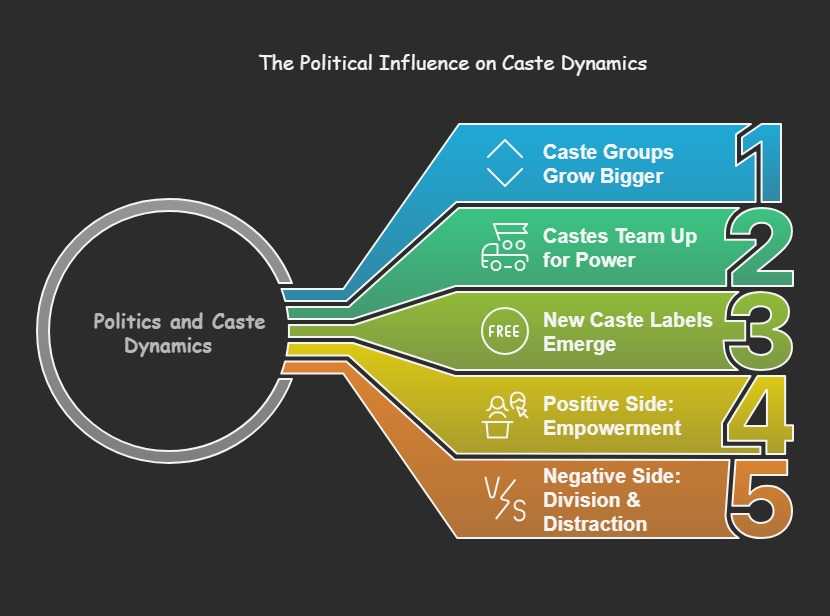
Positive Side: Empowerment
- Voice for the Marginalized:
- Dalits and OBCs use caste identity to demand power, resources, and dignity.
- Protests and laws (like reservations) have opened doors in education, jobs, and politics.
- Example: Mayawati (Dalit leader) becoming Uttar Pradesh’s Chief Minister.
Negative Side: Division & Distraction
- Overfocus on Caste:
- Ignores critical issues like poverty, healthcare, or corruption.
- Conflict Risk:
- Elections can deepen caste divides, leading to violence (e.g., clashes during rallies).
- Stereotyping:
- Assumes all caste members think alike, ignoring individual needs (like a poor Brahmin vs. a rich Brahmin).
Time to Reflect!
- Question: Can caste-based politics ever truly uplift everyone, or does it trap people in old labels?
- Imagine: If caste vanished from politics tomorrow, what issues would you want leaders to focus on?
Remember: Caste in politics is a tool—it can build bridges or walls. Let’s use it wisely! 🌟
Frequently Asked Questions
How does caste influence elections in India?
Political parties often select candidates based on caste demographics and appeal to caste sentiments to secure votes. However, elections are not solely about caste—voters prioritize performance and party loyalty too.
What is communalism in Indian politics?
Communalism is using religion to divide society, claiming one religion is superior. It leads to violence, vote-bank politics, and threatens India’s secular fabric.
How does gender inequality affect politics?
Gender roles (like “women handle housework”) limit women’s political participation. Feminist movements fight for equal rights in education, jobs, and decision-making.
What is a secular state?
India’s secularism means no official religion, freedom to practice any faith, and state intervention to ensure equality (e.g., banning untouchability).
What is the Women’s Reservation Act 2023?
This law reserves 33% seats in Lok Sabha and State Assemblies for women to improve gender representation in politics.
Why is caste still relevant in modern India?
Despite laws against discrimination, caste affects marriage, jobs, and education. Reservations aim to uplift marginalized groups like Dalits and OBCs.
How do social divisions threaten democracy?
Divisions like communalism and casteism distract from development, fuel violence, and exclude marginalized groups from decision-making
What are feminist movements?
Movements demanding gender equality in education, jobs, family laws, and political representation. Example: Campaigns against dowry or domestic violence.
How does politics change caste identities?
Politics expands caste groups (merging sub-castes), creates coalitions, and introduces terms like “OBC” or “forward caste” to mobilize voters.
How does politics change caste identities?
Politics expands caste groups (merging sub-castes), creates coalitions, and introduces terms like “OBC” or “forward caste” to mobilize voters.
What role does secularism play in reducing communalism?
Secularism ensures equal respect for all religions, bans discrimination, and prevents the state from favoring one religion—key to combating communal violence.
What role does secularism play in reducing communalism?
Secularism ensures equal respect for all religions, bans discrimination, and prevents the state from favoring one religion—key to combating communal violence.


